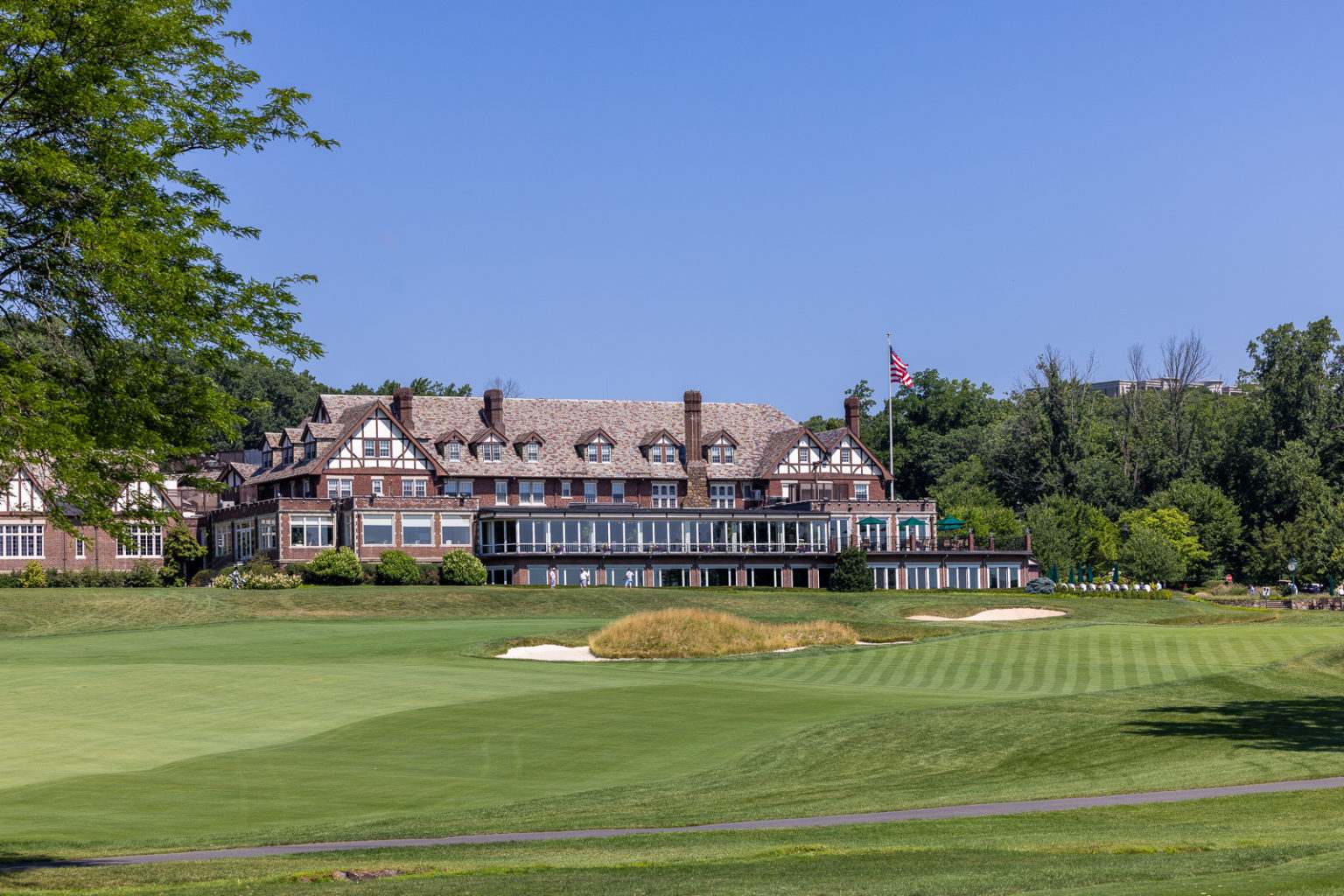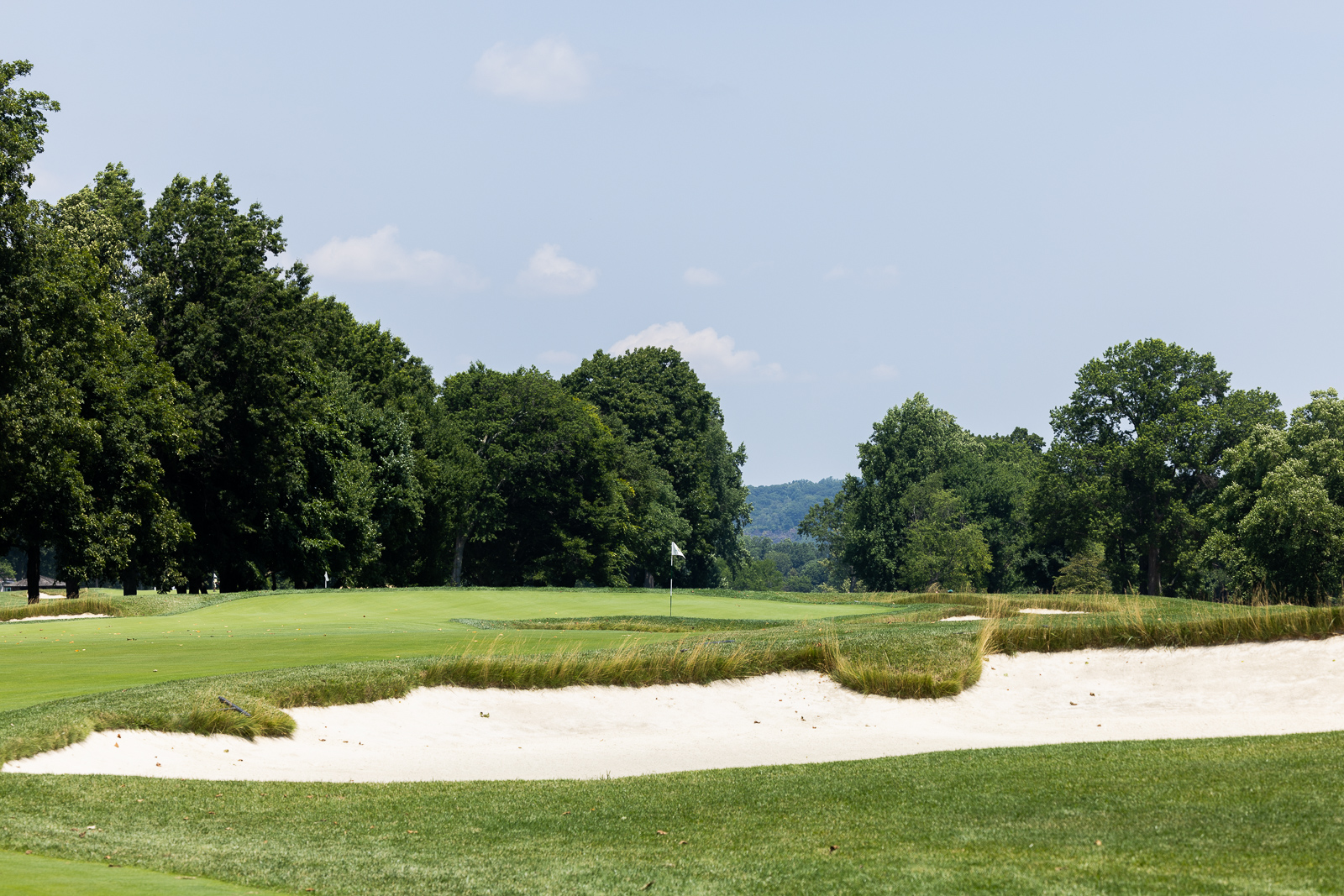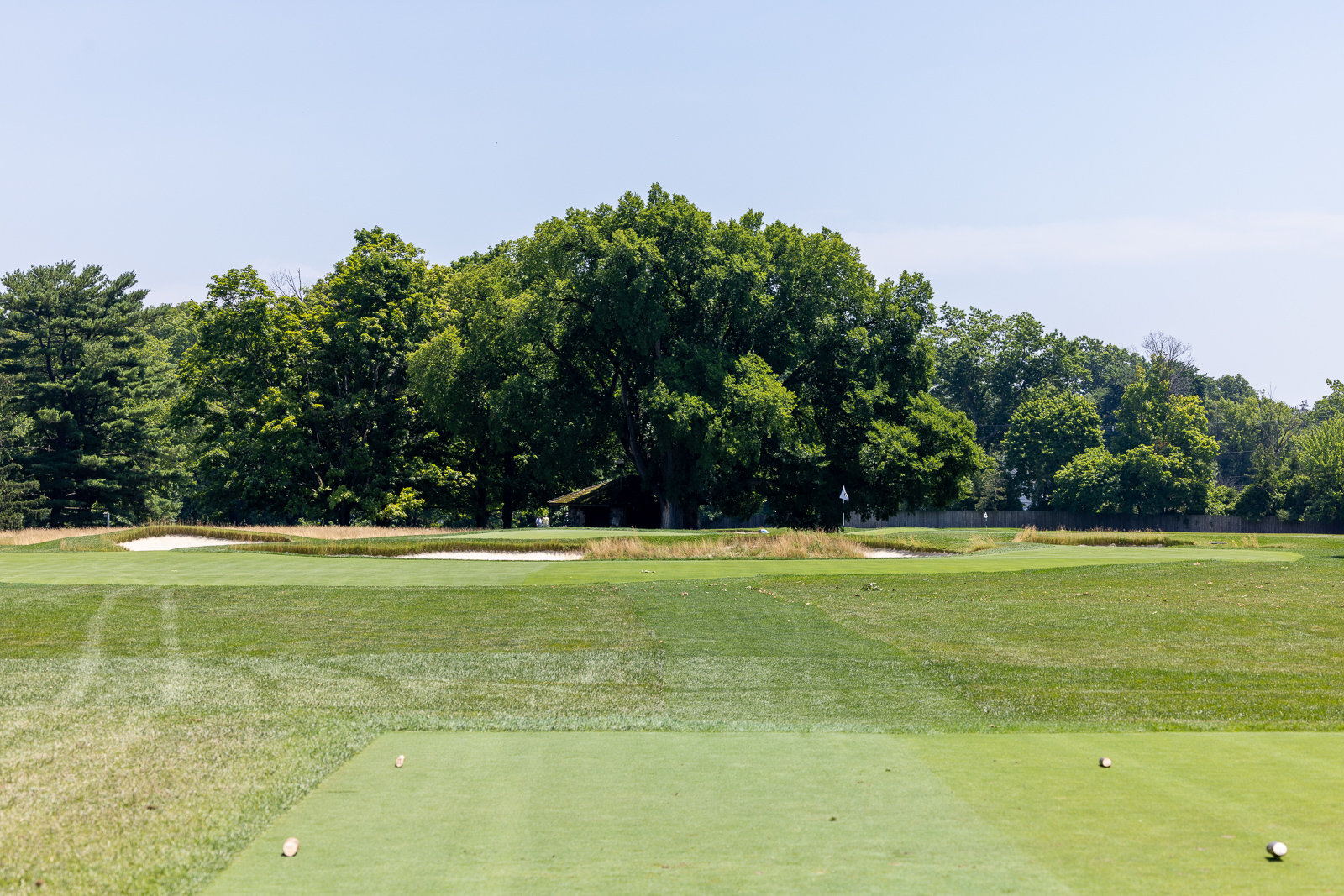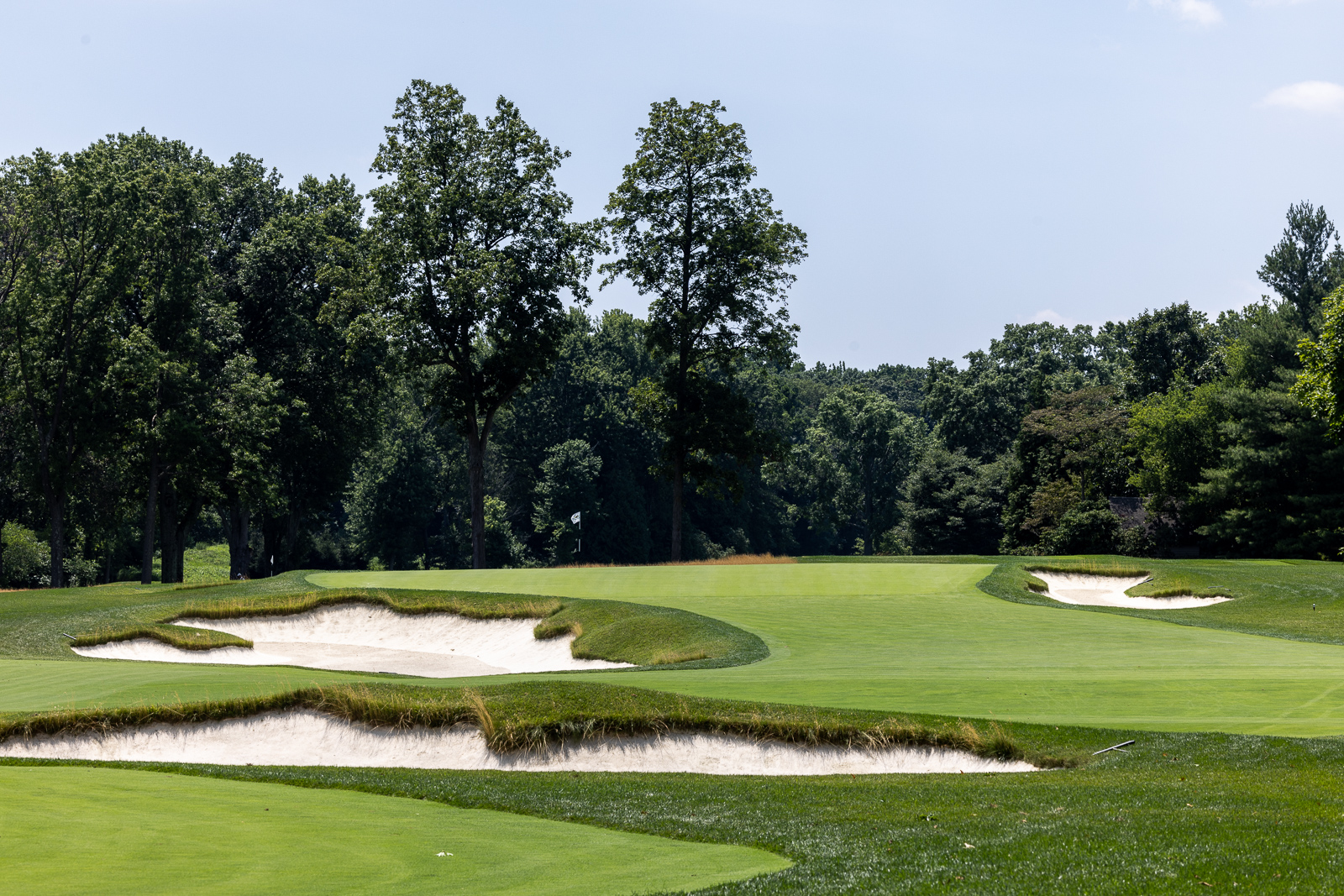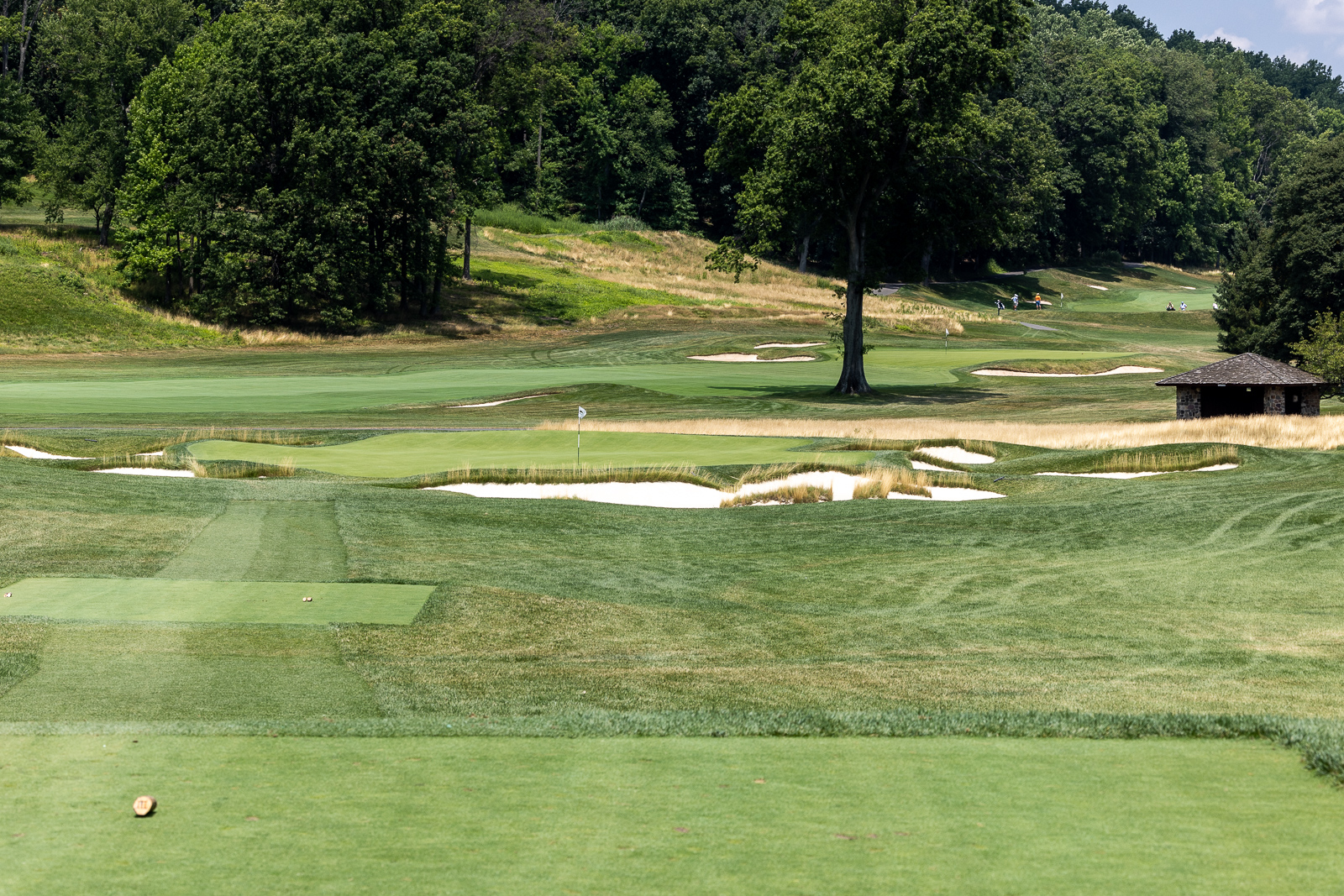When you walk into the Scoring Room at Baltusrol Golf Club, you immediately understand the gravity of the history that has taken place on these grounds.
7 US Opens, 2 PGA Championships, 2 Women’s US Opens, 4 US Amateurs – the list goes on.
Jack Nicklaus’ winning scorecard from the 1967 open – signed by Arnold Palmer.
The US Open trophy perched right next to the PGA Championship trophy.
There are very few golf clubs in the world that rival the tournament pedigree and history of Baltusrol Golf Club.
I mean how many golf clubs are actually listed on the National Register of Historic Places? Not many.
You might think that because of this, the club is stuck in the past. Perhaps, relying on previous moments of glory to retain its stature in the golf world?
The reality couldn’t be further from the truth.
I’m not sure I’ve ever seen a private club that is so steeped in tradition, take so many bold steps to move every aspect of their club into the future.
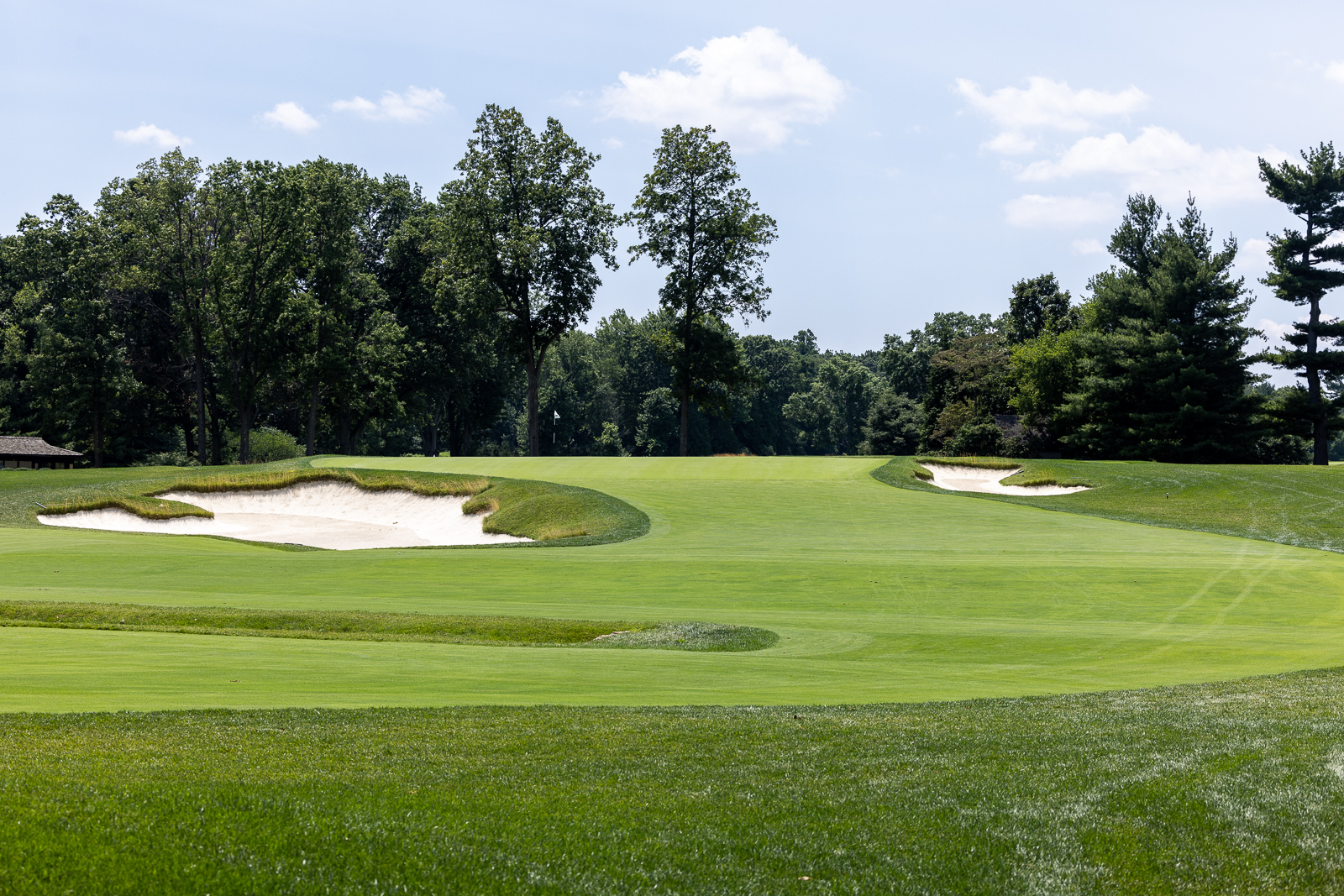
Major restorations to their two courses (which are already among the Top 100 in America, btw.)
High-tech clubhouse features.
And a mindset of “our best is yet to come” can be felt over every inch of the property at Baltusrol.
So what’s it like experiencing the course firsthand? What are some of these bold changes I’m speaking of? That’s what we’re going to talk about today.
The History of Baltus Roll
For years, I’ve been curious about the club’s name: Baltusrol.
Turns out, it was named after a person.
Baltus Roll used to farm the land that the club now sits on.
Unfortunately for Baltus, he was murdered in 1831 after a couple thieves thought that he had buried treasure on the property.
The land was purchased by Louis Keller in the 1890s, and in 1895 he announced Baltusrol Golf club would open.
The original 9 holes opened that year, and 3 years later the 2nd nine opened.
But by the mid-1910s the club decided to expand and add a second course.
They sought the expertise of A.W. Tillinghast who was quickly making a name for himself as one of the top golf architects in the world. He recommended razing the Old Course in favor of two brand new courses that would get the most out of the land.
And thus, the Upper and Lower Courses as we know them today were born.
It was the first time ever two courses were subsequently designed and built at the same time in America.
Both courses opened for play in 1922.
There’s a much more in-depth timeline of the club on the Baltusrol website, that does a far better job than I ever could relaying its history.
A World Class Restoration
Several renovations have happened on the Lower course including a lengthening in 1948 by Robert Trent Jones, and another lengthening in 1992 by his son Rees ahead of the 1993 US Open.
But it’s the most recent restoration by Gil Hanse which was done in 2020 that has the golf world fawning over the new iteration of the course.
Many clubs over the decades have tried to temper technology advances by lengthening their courses, and thus changing the character of the original design of the course.
Fortunately, we’re seeing many of them recognize the greatness of the courses as they were originally built. Gil Hanse has been at the forefront of many of these restorations at courses like Sleepy Hollow, LACC, Yale, and here at Baltusrol.
Rather than a renovation, Hanse was tasked with restoring the original character of the Tillinghast design, while at the same time implementing agronomy changes that would elevate the quality of the turf and course for decades to come.
For any course that’s over a century old, especially one that has had numerous changes over the years – it’s inevitable that course elements and shot values would change from what the architect’s original vision looked like.
Elements of the Lower Course Restoration
One of Gil Hanse’s primary tasks was to bring back all of the character and elements of the course as Tillinghast had built it – while still providing a challenge for modern day players.
Great Hazards
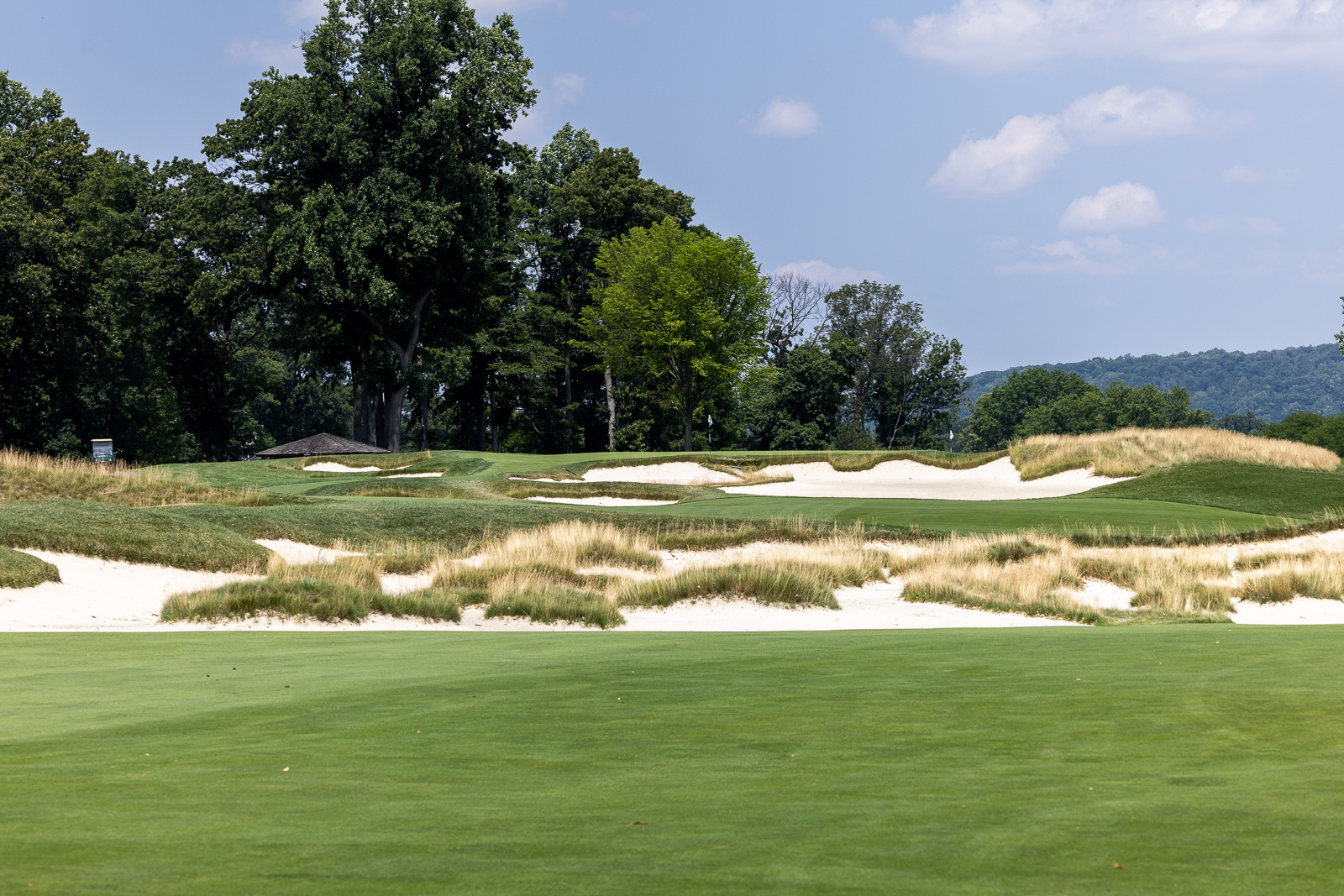
A few examples of this were the Tillinghast signature “Great Hazards”. These are bunkers or waste areas that traverse across the entirety of the fairway, forcing you to be precise with your distances and layups.
Both the 2nd and 17th holes have wonderful examples of these.
Fairway Bunkering
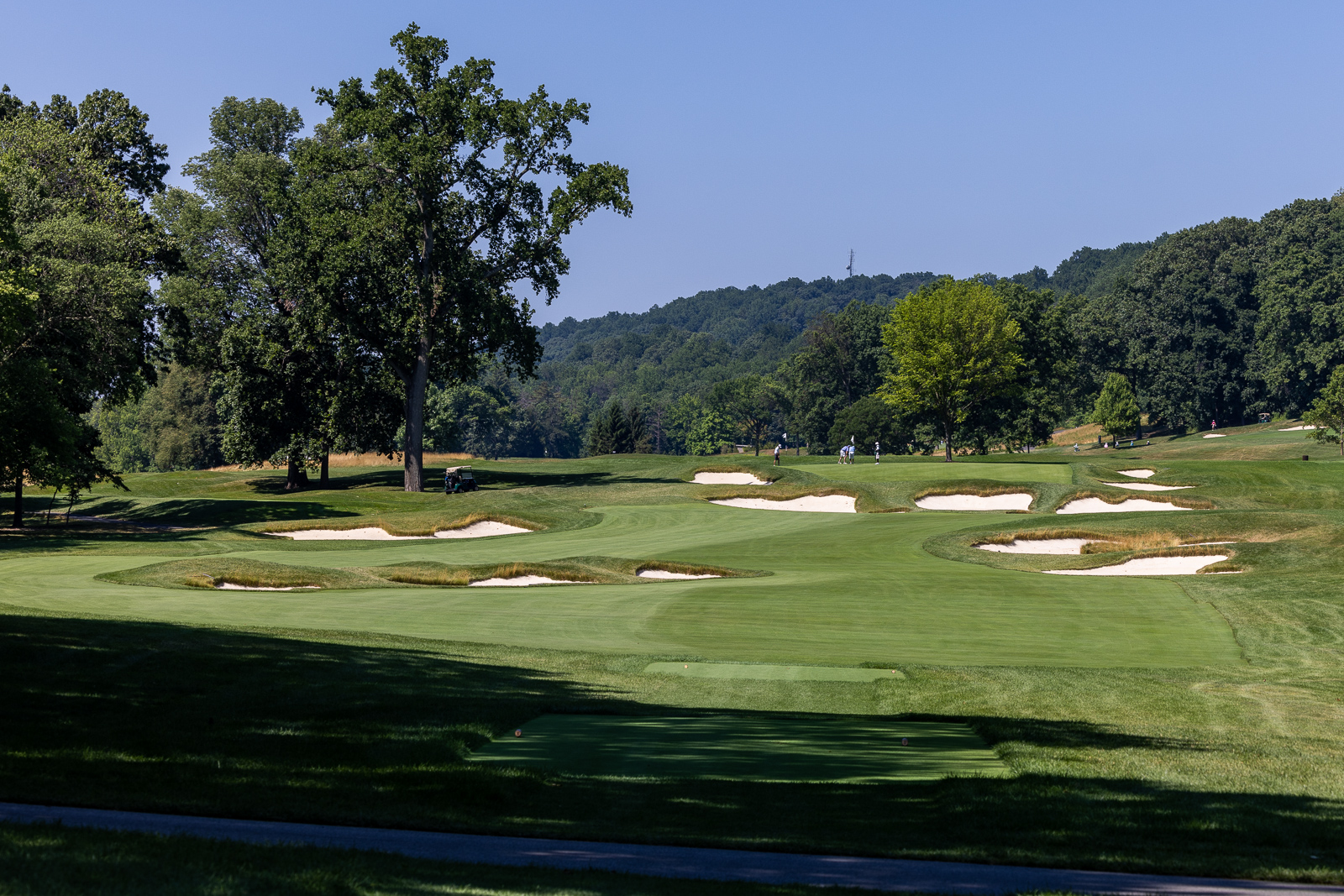
Over the years certain fairway bunkers had been removed, so reintegrating many original Tillinghast bunkers was important.
You see this on the 2nd and 5th holes.
I didn’t see the Lower Course before the restoration, but the fairway bunkers on both of these holes are among the most memorable features on the course, so it’s hard to imagine the course without them.
Greens
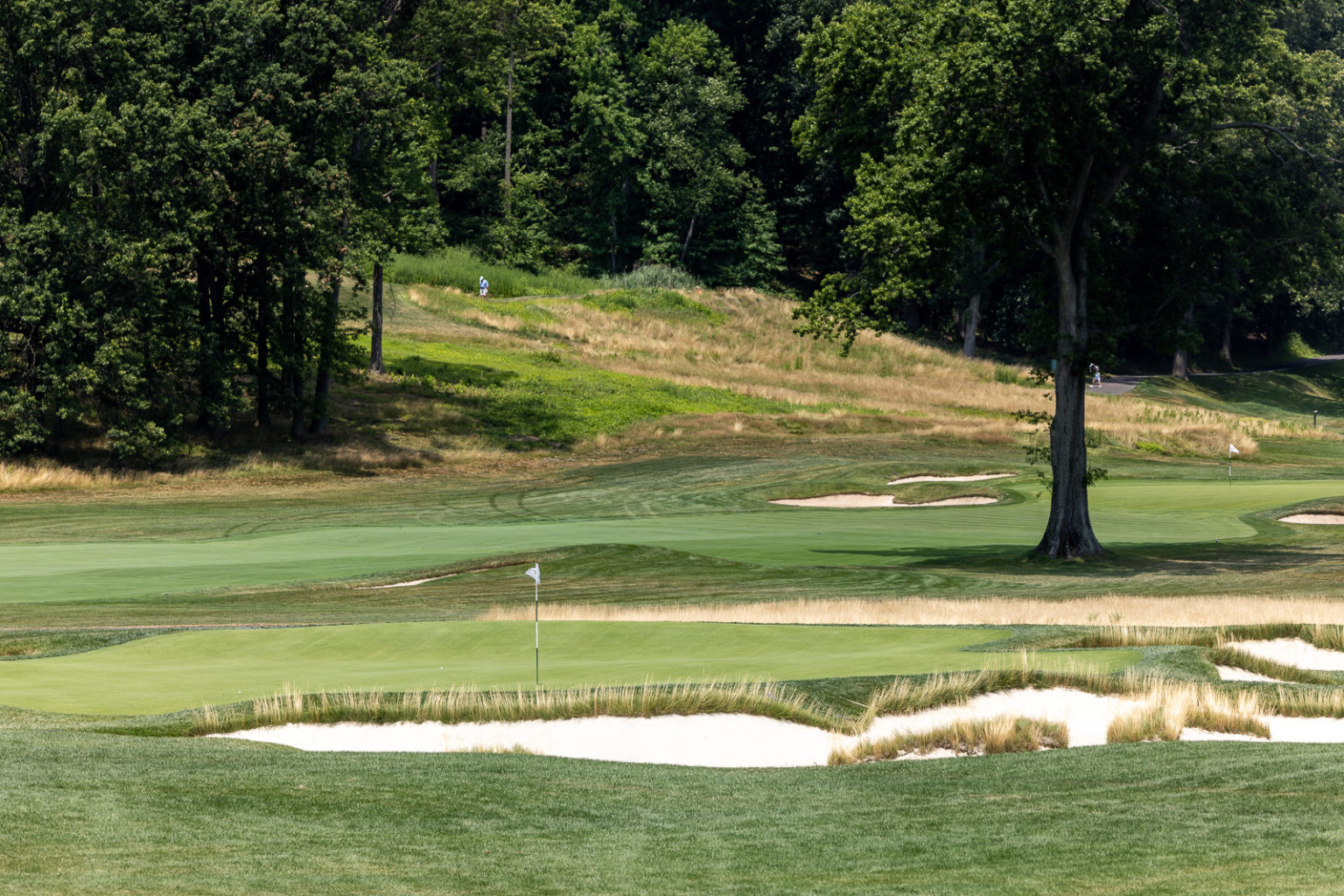
Over decades of play, it’s common that greens will shrink in size as sand builds up from years of bunker play and mow lines slowly shift as well.
Every green was rebuilt during the restoration leading to 20% more green surface area across the course.
Agronomy
There were also significant agronomy upgrades during the restoration.
PrecisionAire systems were installed on the Lower Course greens to allow the course to remain much more playable amidst varying types of weather.
There was new drainage installed, new irrigation, and trees removed to improve sightlines and turf health.
This is the rare restoration where everything was touched, and the quality of it shows in both how the course looks as well as how it plays.
By looking to the past with design choices, and to the future with agronomy changes – the Lower Course is as good as it’s ever been and worthy of its place among the top 100 golf courses in the world.
But what’s it like to play?
First Impressions of Baltusrol Golf Club
Driving through the gates and up the driveway to Baltusrol for the first time is a special experience.
It’s akin to the first time you visit Winged Foot, or even Pebble Beach.
There are few places that rival Baltusrol’s stature both in terms of architectural pedigree and tournament history. So having to opportunity to play here is a special experience for any golfer.
As you pull up, you immediately notice the size of the iconic Tudor clubhouse.
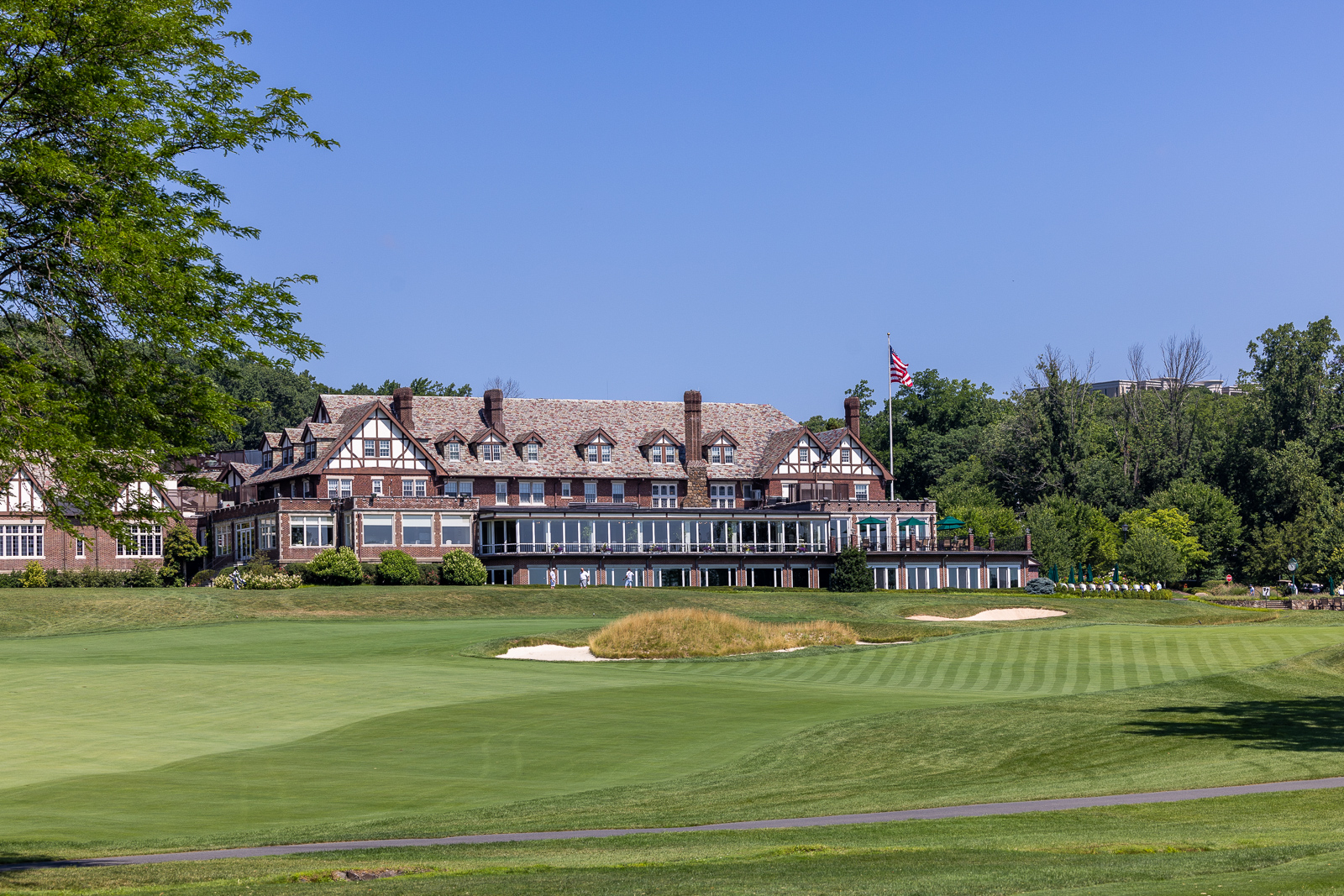
I’ve seen a lot of golf clubhouses, and it’s hard not to be impressed by Baltusrol. Even more so once you go inside, but we’ll get to that later.
I met my friend Cody in the parking lot, and we headed over to the range to hit some balls before the round.
The range is unique in that’s it built into the side of a hill, and there are multiple target greens spread throughout the range.
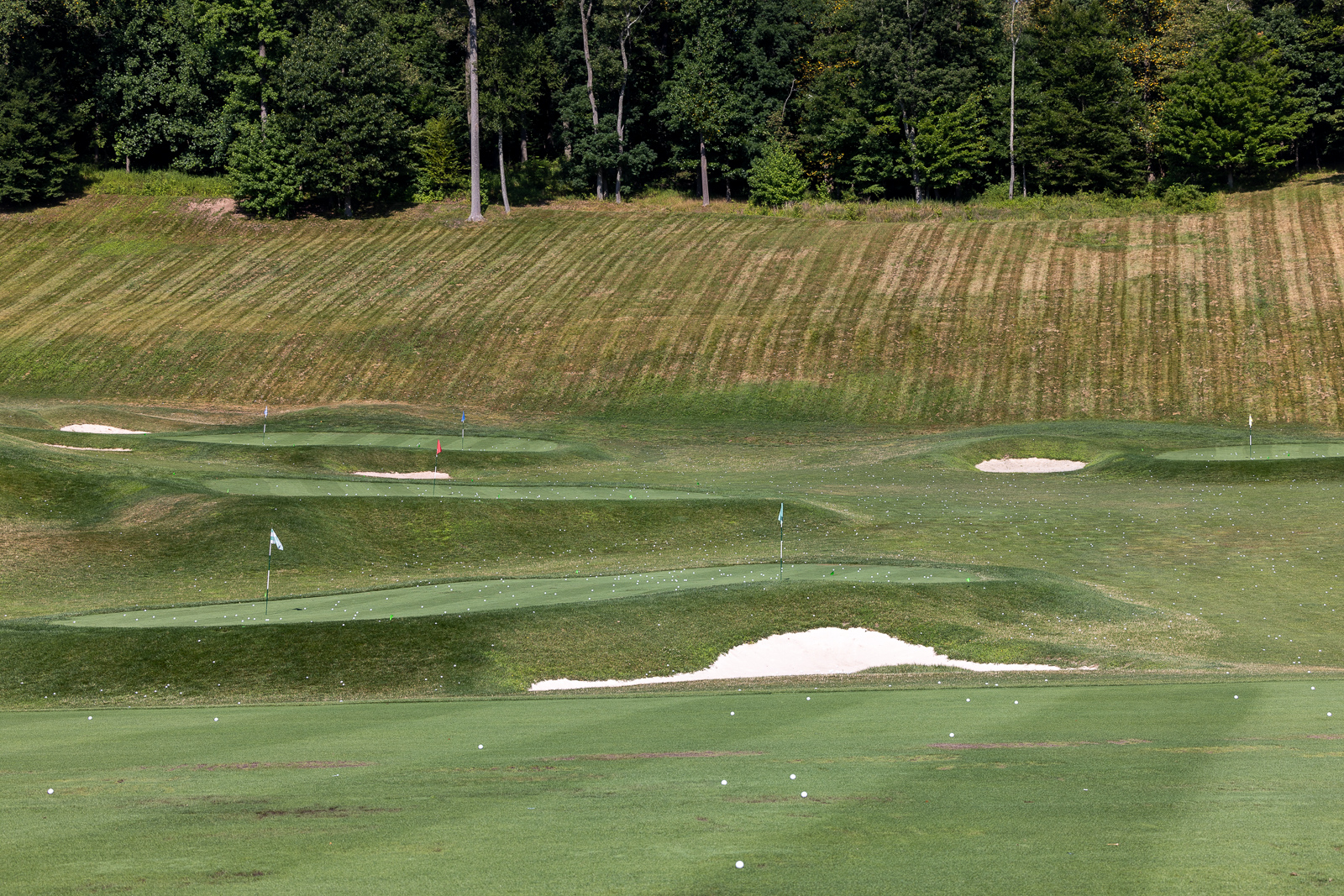
We rolled a few putts and headed to the first tee where we were met by Austin an assistant pro who’d be playing with us.
Act 1: The Opening Holes on the Lower Course
Many courses have Jekyll and Hyde 9s. Where one nine feels or plays very differently than the other.
Others feel similar (sometimes too similar) throughout the entirety of their 18 holes.
The Lower Course at Baltusrol however feels like it really plays out as a series 3 acts.
Holes 1-6, then 7-14, and finally 15-18 each feel as though they bring a new challenge for the golfer.
But the best part about it is that these sections of the course flow naturally into each other and feel very cohesive, despite having some different design attributes.
The opening 6 holes feature some great elevation changes, wonderful bunkering, and sit in the shadow of the imposing and iconic clubhouse.
Standing on the first tee, the opening par 5 is right out in front of you.
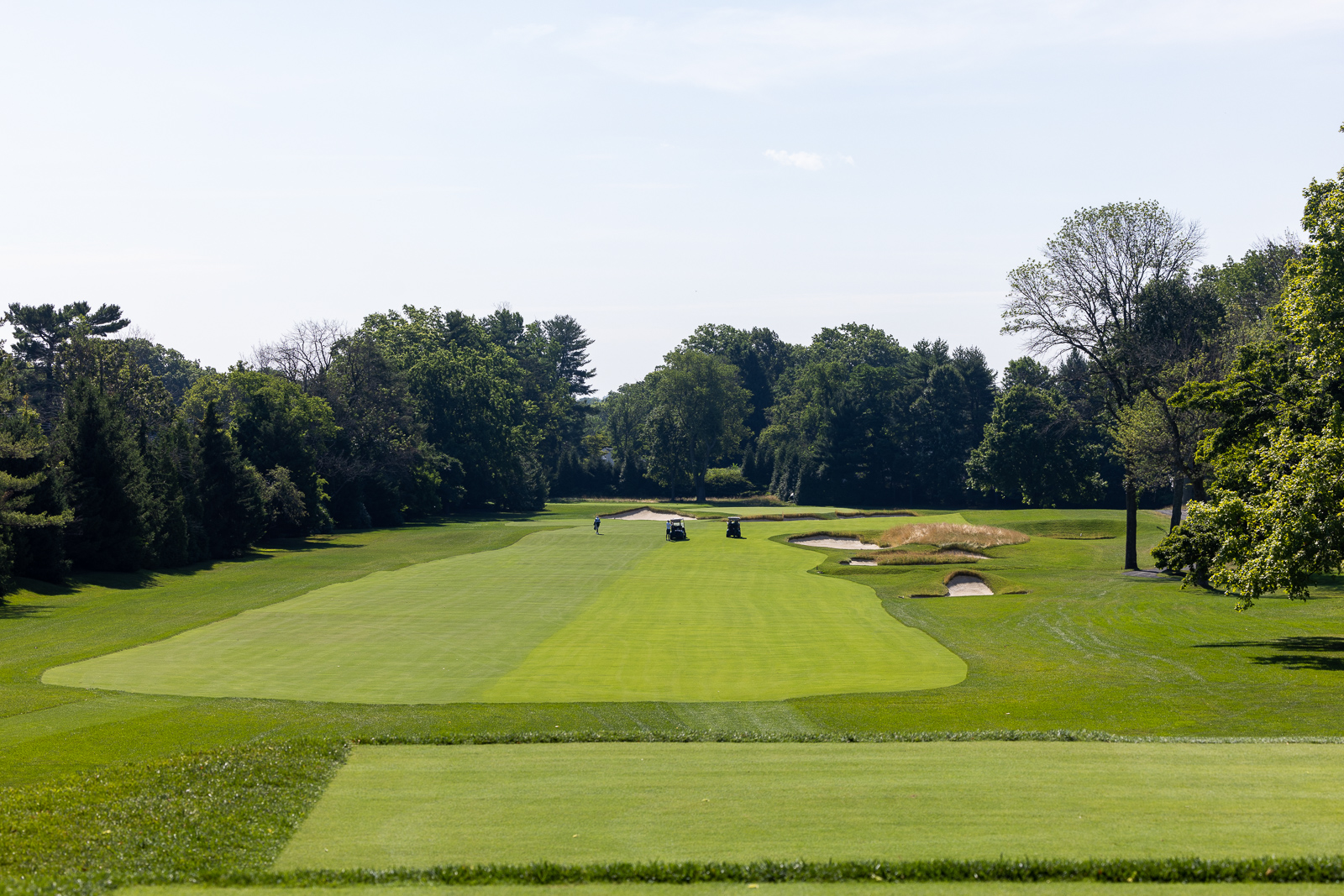
The tee shot isn’t overly difficult, but if you miss the generous fairway you’ll get a stark introduction to the championship-level rough you’ll experience throughout the course.
The green is reachable in two with a good drive, but as you’ll find throughout the course – each hole leaves you with a decision to make.
A layup is the safe play, but the large green begs you to go for it in two – just avoid the deep bunkers that protect the entire front side of the green.
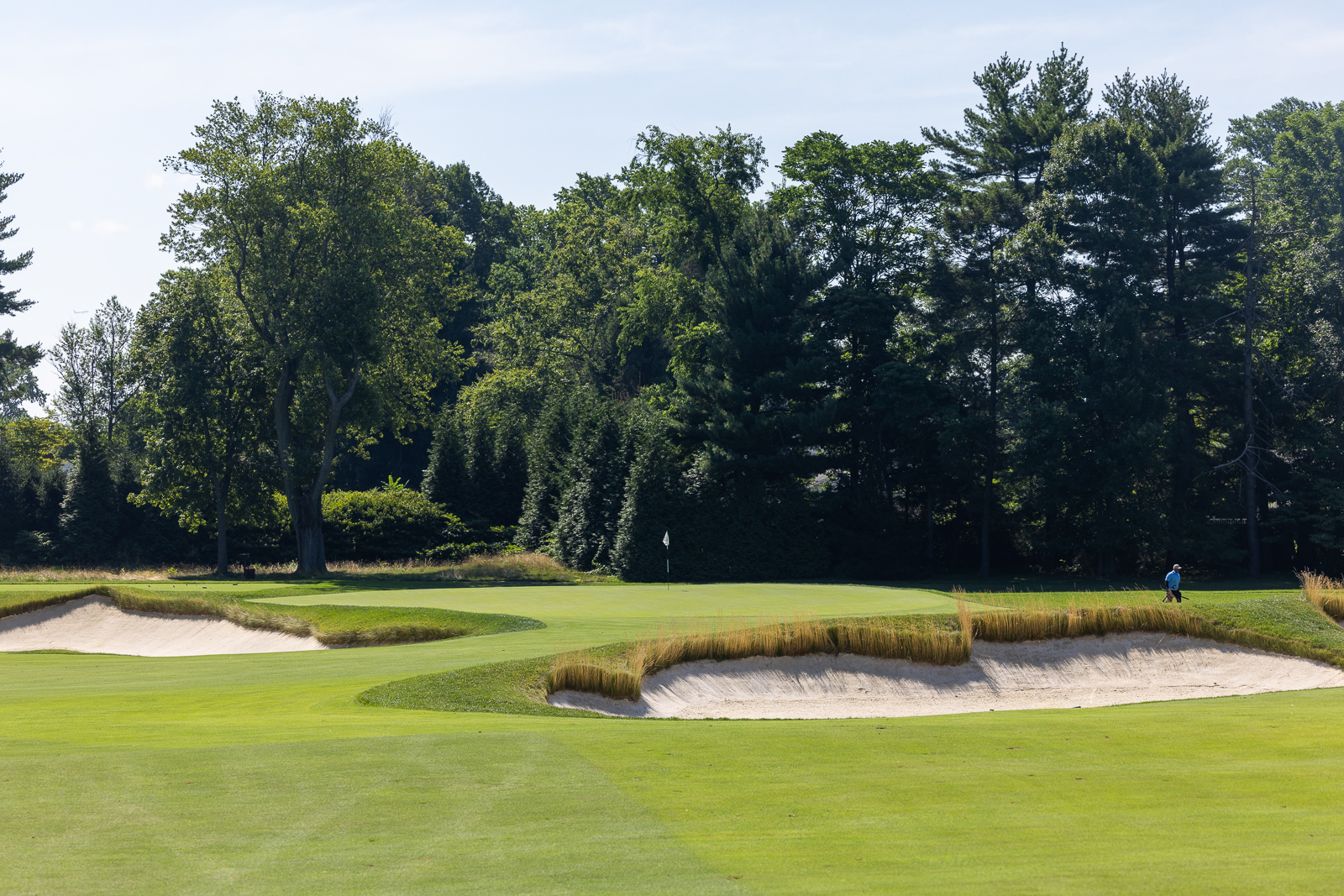
Two is a dogleg left with visually imposing cross bunkers that leave you questioning how best to play the hole if you’re unable to hit a draw 🙂
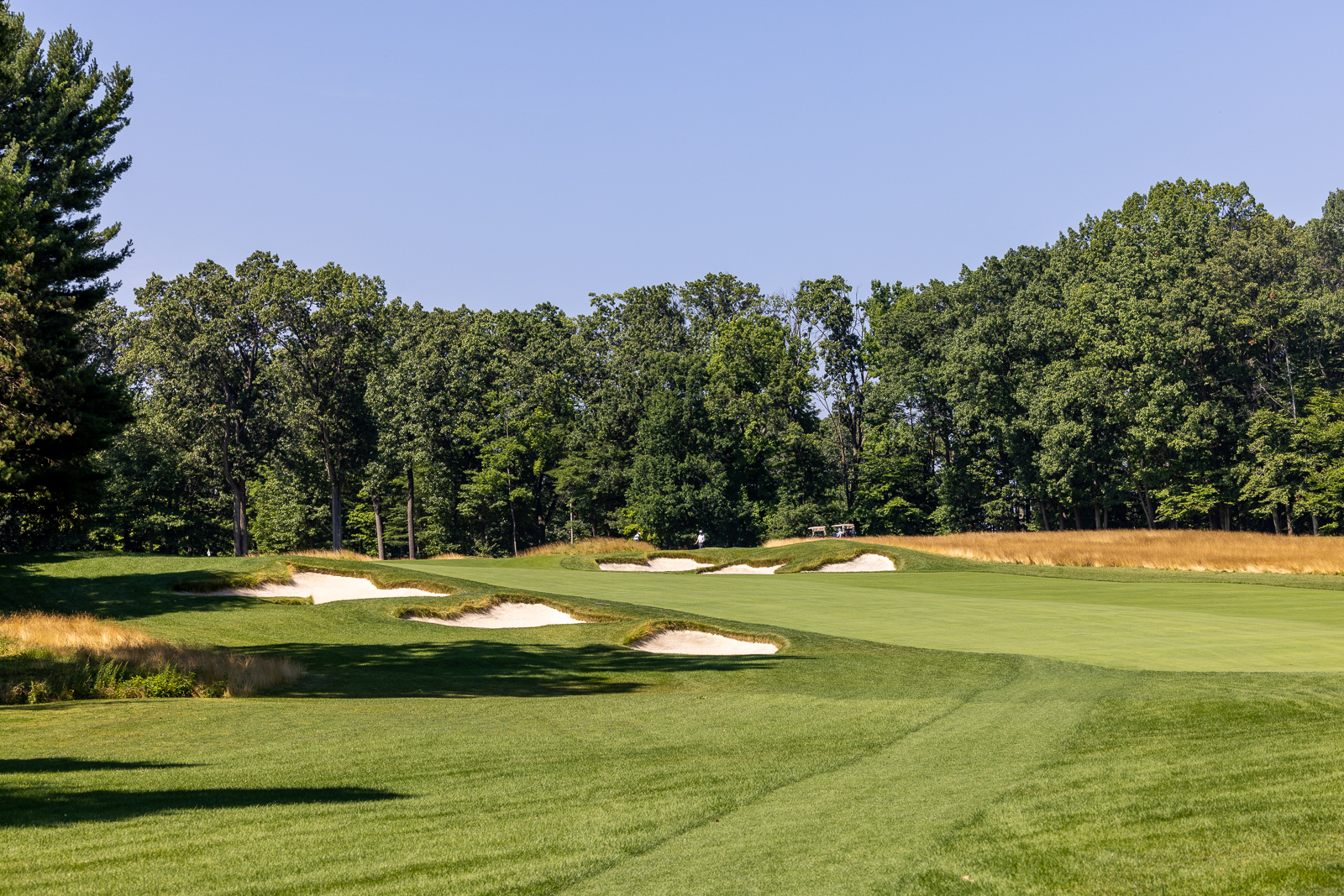
The third hole seems benign off the tee until you get to the sweeping dogleg and are met with a long iron into a large, well-protected green.
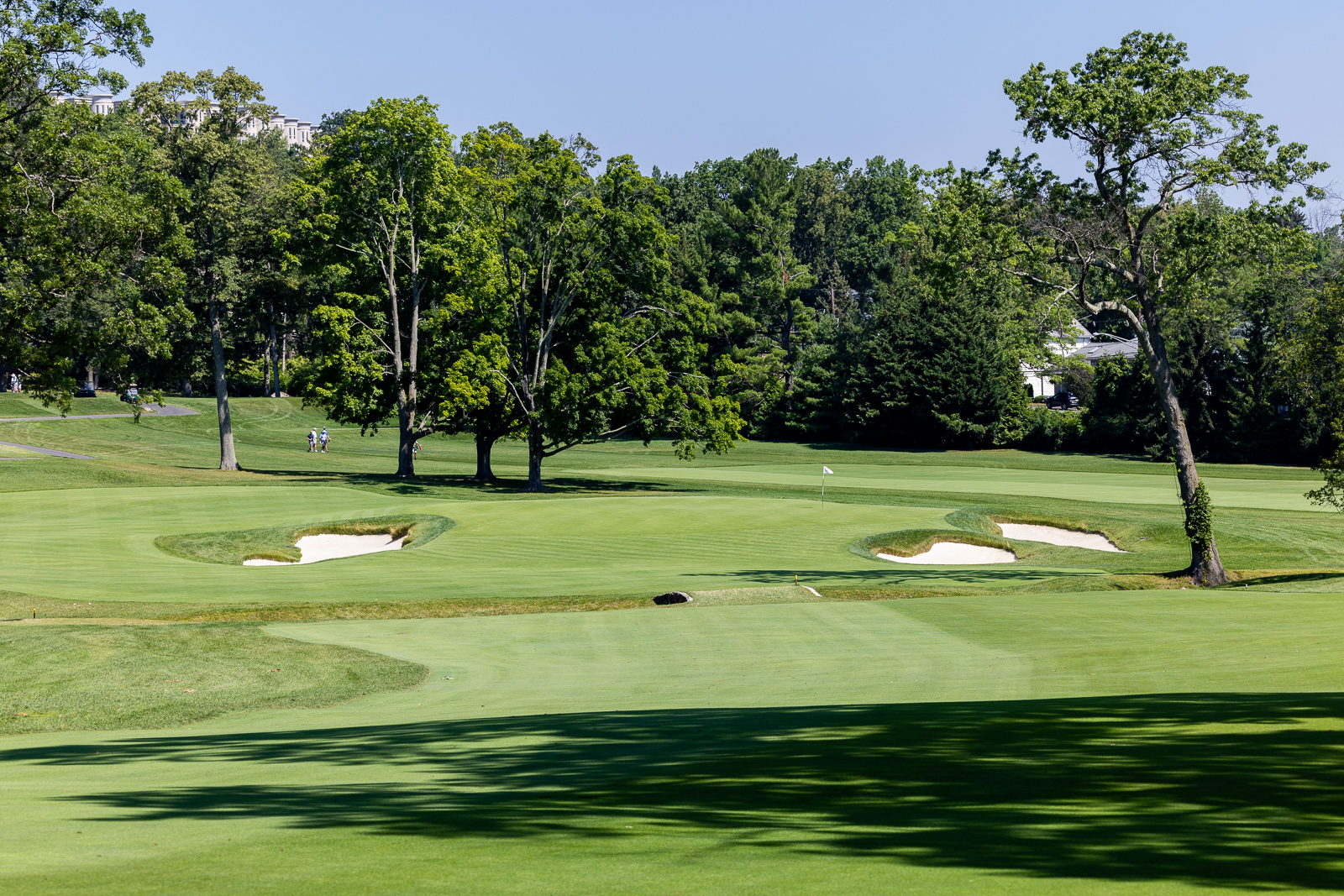
4 seems like a simple par 3, until you realize just how much trouble you’re in if you leave the ball above the hole.
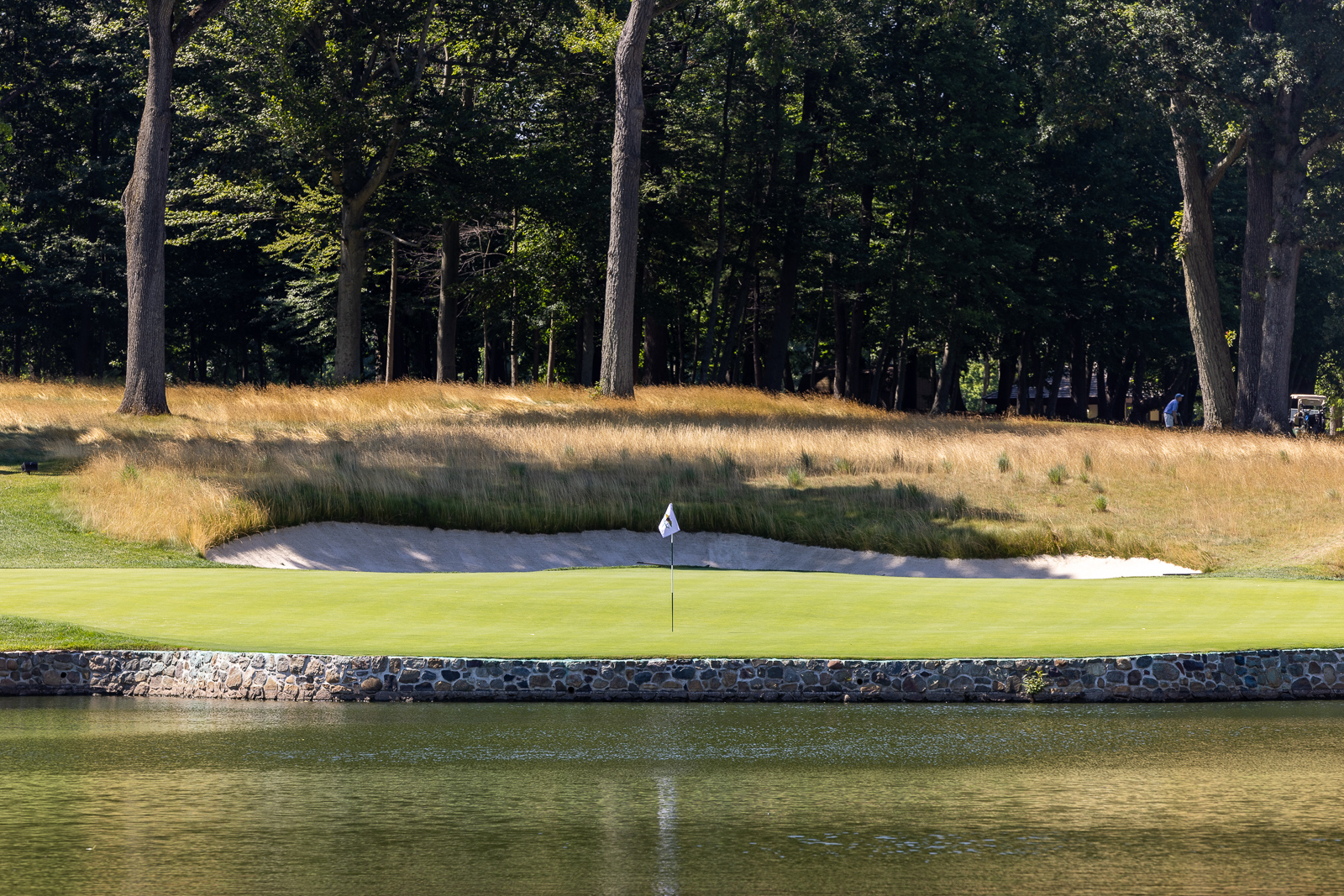
Or worse, leave it in one of the back bunkers like I did.
The par 4, 5th takes you uphill with a masterclass in fairway bunkering that asks you to take them on for the easiest approach, or to lay back forcing a long approach shot to an uphill green.
It’s one of the most interesting par 4s I’ve played in my golf travels.
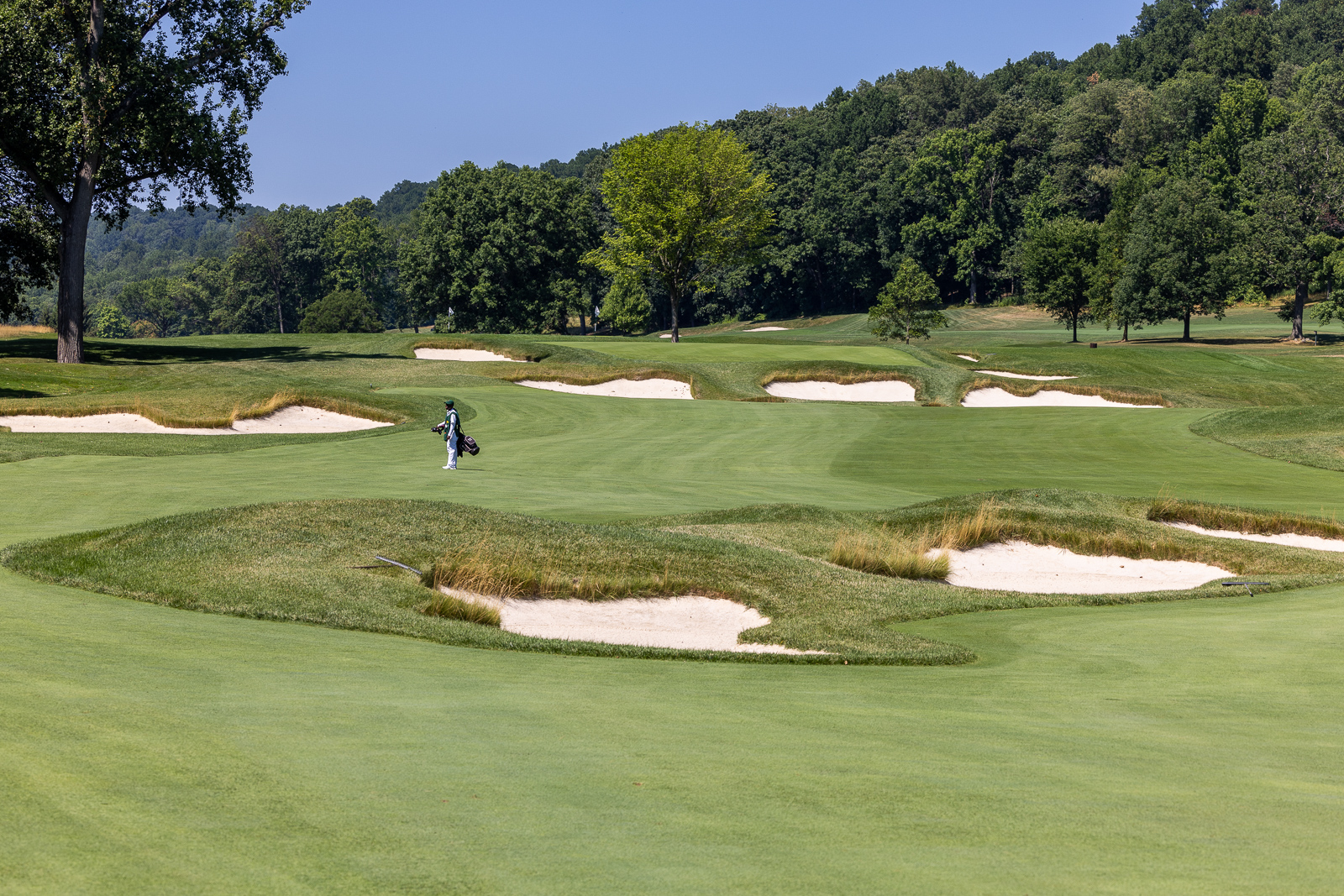
On 6, you’re greeted with a brutally long par 4 with some signature Tillinghast bunkers to the right off the tee.
And from there, you enter what feels like the second “act” of the golf course.
Act 2: A Unique Challenge
The terrain changes a bit, and you’re met with holes that don’t have quite as much elevation, but present a different type of challenge.
You still see similar bunkering, and an emphasis placed on smart shot-making.
But you know what you don’t have as much of? Visibility.
During this next stretch of holes, many of the tee boxes aren’t elevated at all.
This provides a unique challenge of not being able to see what’s happening on the hole out in front you. It asks you to really rely on your senses as a golfer to strategically work your way through this section of the course – deciding when to be aggressive, and when to play it safe.
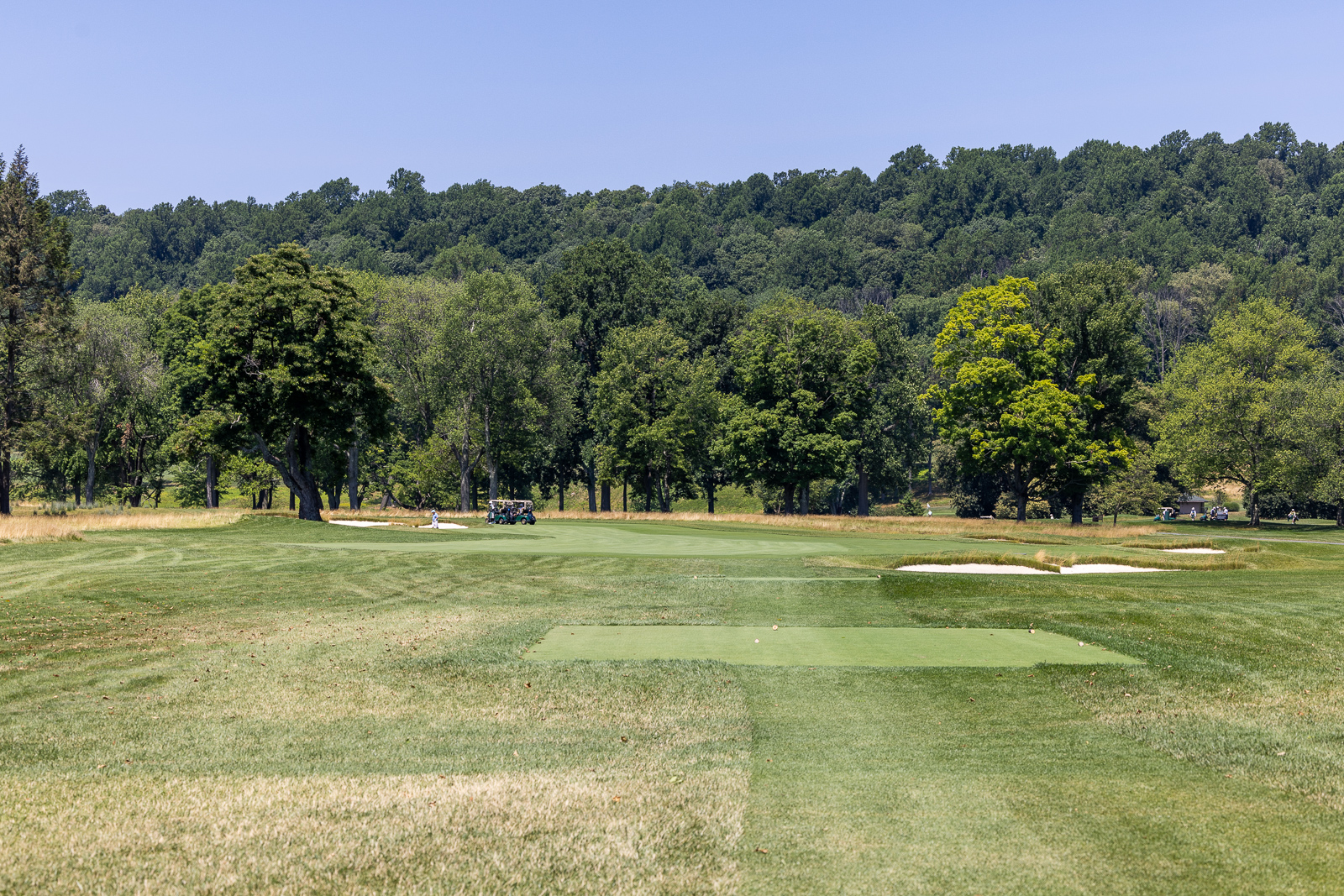
It’s an interesting way to provide a new challenge to an area of the course that doesn’t have quite as much land movement as other sections.
All of the par 3s on the Lower Course are challenging, and the 210-yard 9th. epitomizes this. The further right the pin is placed, the more it begs you to try and take on the front bunkers.
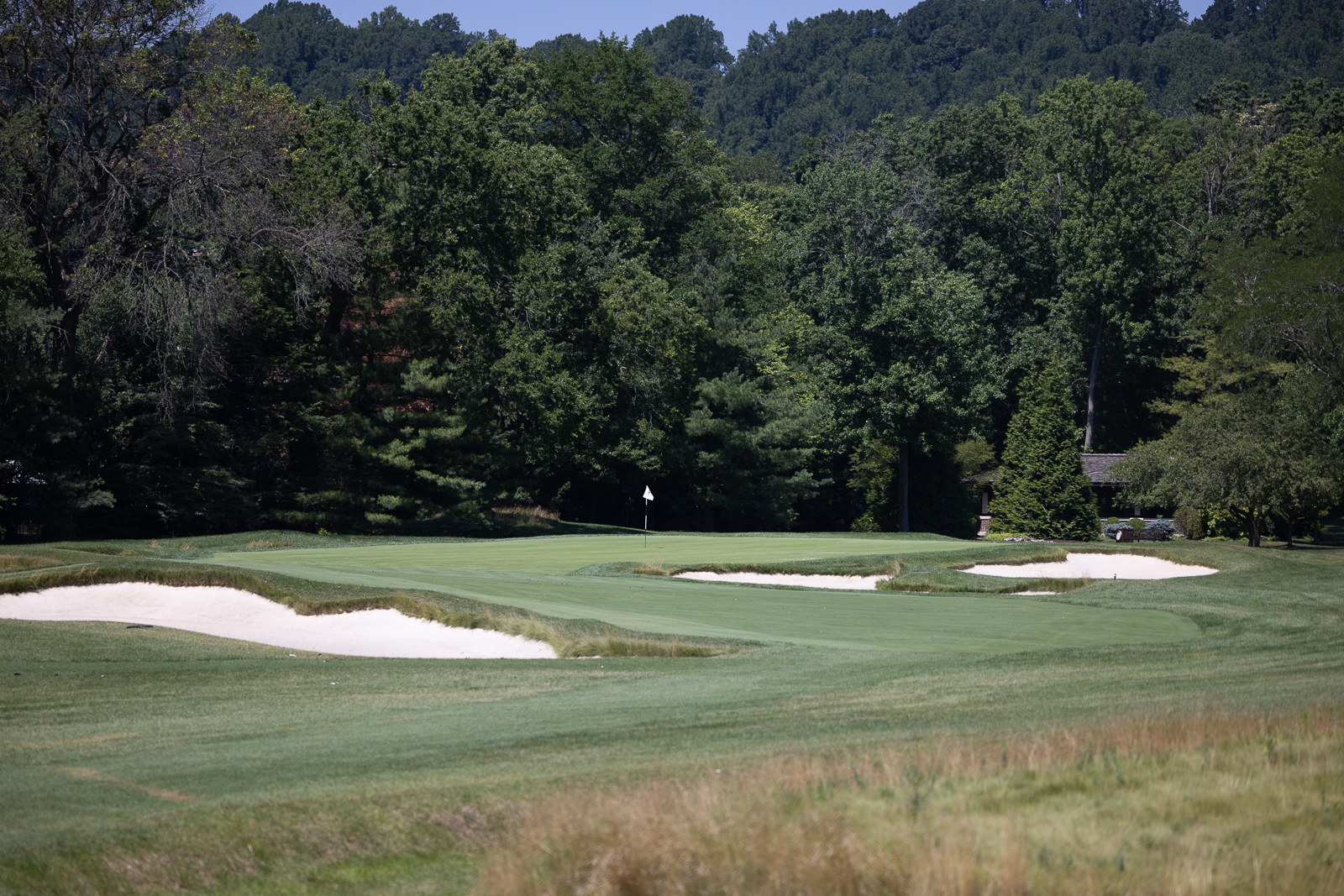
Do yourself a favor. Aim for the left center of the green no matter what and be happy with a par.
Act 3: The Final 4 Holes on the Lower Course
The final 4 holes at Baltusrol, are big, beautiful, and challenging.
It’s a phenomenal finishing stretch that gives you a little bit of everything.
The 15th is one of the most scenic holes on the course but requires two very good shots if you want a chance at par. There’s a significant false front on the green, forcing you to get even more distance on your approach than it may initially look like.
The Lower Course has an excellent quartet of par 3s, but the 16th is my favorite.
A downhill shot, with one of the most interesting and unique greens on the course. There’s a backstop that can funnel balls back to the center of the green, and while we played it at around 180 yards, the pros play this from 240 making it a beast of a hole.
17 is another one that gets scary long during Championship tournaments: 655 yards.
We played the iii/iv combo tees at around 6400 yards. 17 played a manageable 495.
Looking back at the nearly two football fields behind us where the pros tee it off from? It’s hard to imagine what it would feel like walking up to this tee during the Sunday round of a US Open.
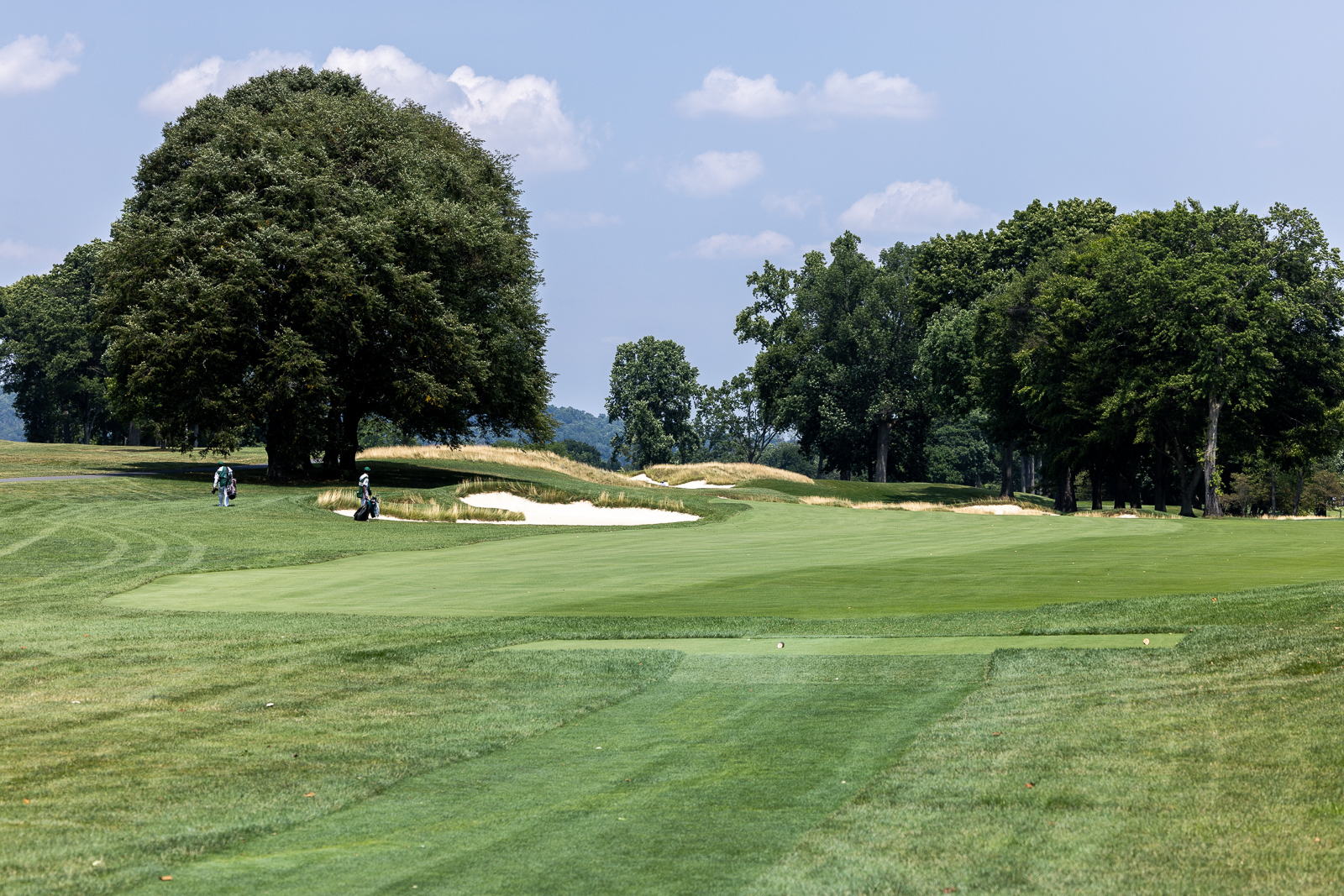
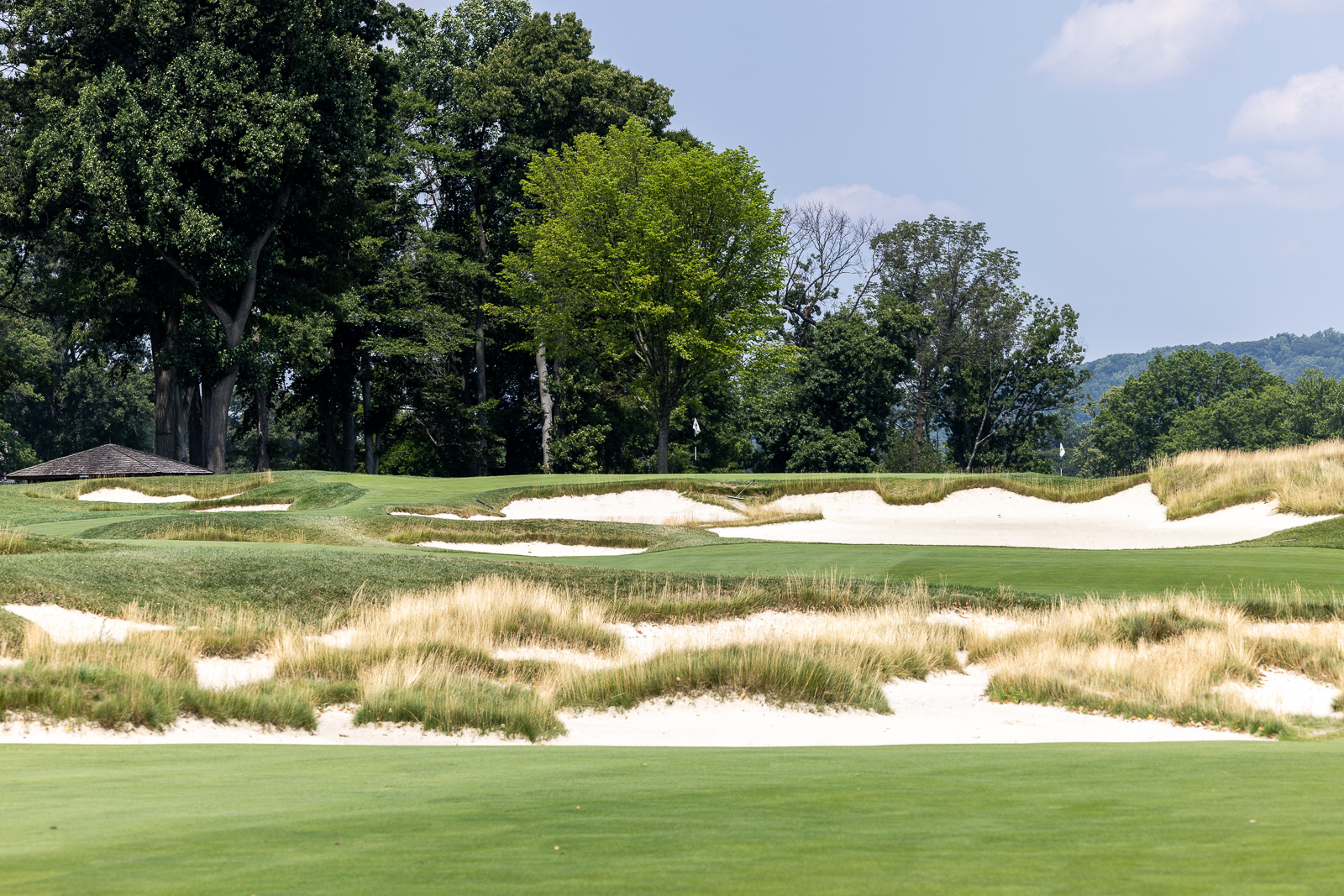
This par 5 may feel like the most “Tillinghast” of any hole on the property. A well-defended elevated green and a strategically placed “Great Hazard” forces you to make 3 smart shots.
18 then forces you to make another strategic tee shot.
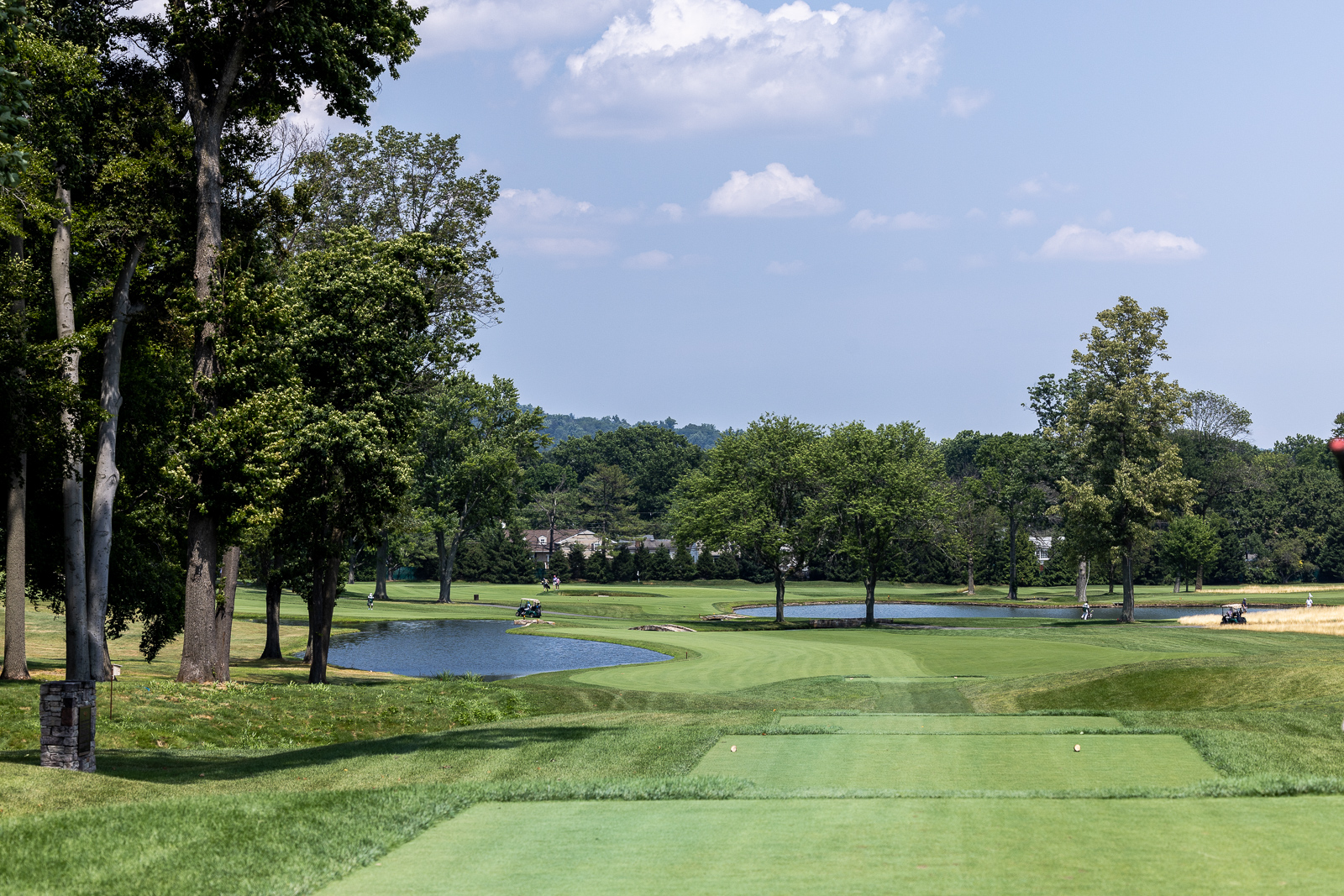
Stay as far left as you can to give yourself the best angle and shortest approach possible. Too far left and you’re in the pond.
The green is huge and more elevated than it looks, and makes for a fantastic finishing hole.
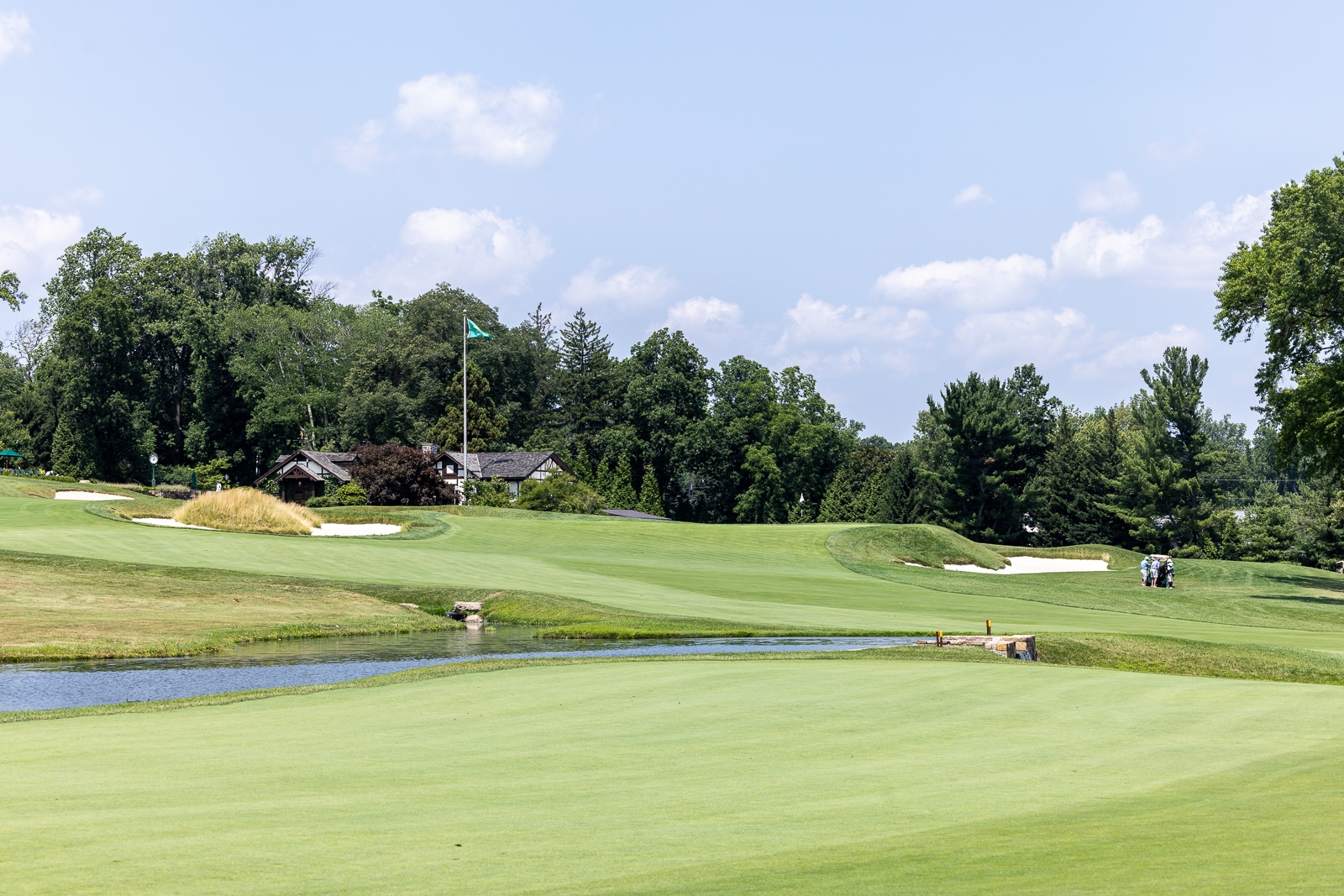
The Lower Course at Baltusrol is one of the best examples in the world of a course that “has it all.”
It’s got beautiful scenic holes, unique architectural features from the heart of the Golden Age, and more Championship pedigree than all but a handful of courses in the world.
The restoration is a masterclass in how to embrace the history of a course while also propelling it into the future.
The Upper Course restoration will begin in the Fall of 2023, and I can’t wait to see how it compliments the work done on the Lower Course.
The Clubhouse at Baltusrol
After our round, we spent some time walking through the clubhouse and learning a bit about its history.
In every club’s worst nightmare, there was a fire that ravaged the clubhouse in 2019, and caused significant damage.
Fortunately, most memorabilia was saved, but about half the clubhouse was significantly damaged and required major construction to bring it back to life.
But in keeping with the theme of honoring the past, while moving into the future, Baltusrol has done some very interesting things.
The Scoring Room
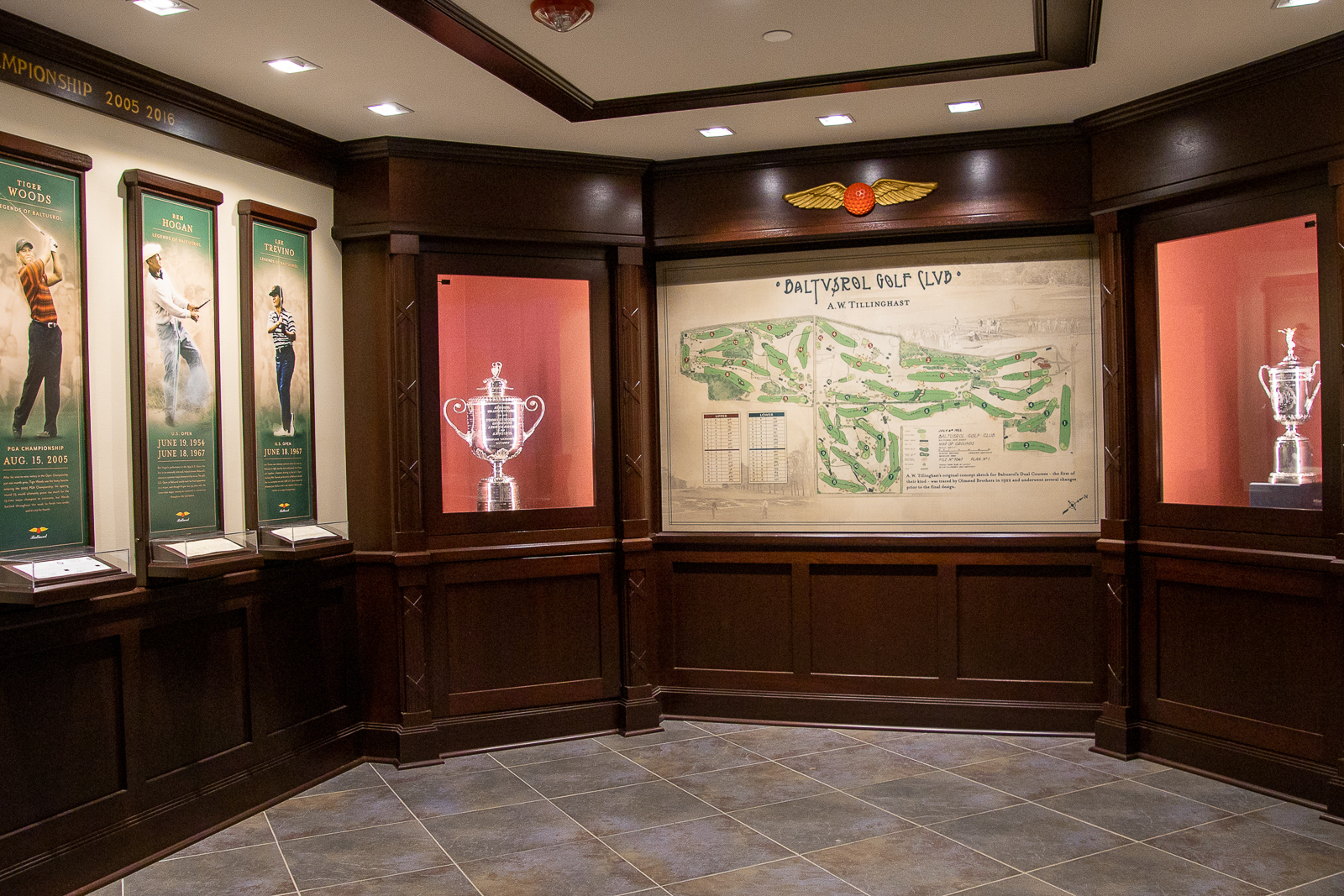
The first and most notable is taking the old Caddie Master room, and turning it into a showpiece for the club called the “Scoring Room.”
When you walk in you’re greeted by a rotating collection of trophies and scorecards from major moments in the club’s history.
Signed scorecards from Jack, Arnold, Tiger and more adorn the walls, while major trophies have dedicated spaces as well.
What’s displayed shifts from time to time based on upcoming events at the club.
A Nine-Foot Look into the Past, Present, and Future
But my personal favorite feature? The clubhouse touch screen.
And this isn’t just any touch screen.
This is a custom-made, 9-foot-long touch screen that will tell you anything you want to know about the club.
Located outside the Locker Room Bar, this screen will give you everything from a detailed history of the club throughout the decades, to a flyover and rundown of any of the club’s 36 holes.
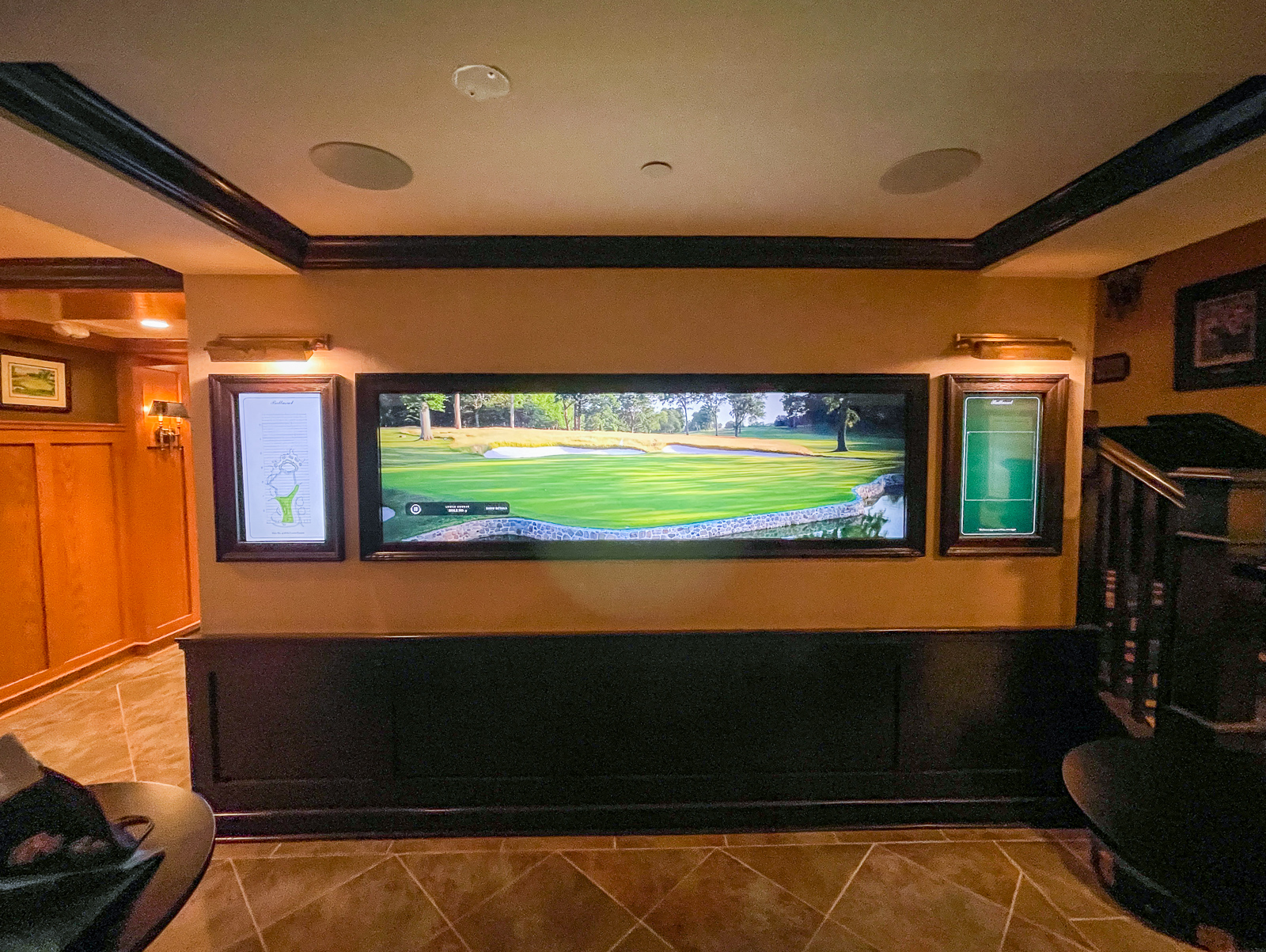
There are two additional screens to the left and right that also change based on your touch input.
You could easily spend a couple hours in front of this thing just taking in all that the club has to offer.
I never expected to see something like this at Baltusrol.
A place so historic, and so steeped in tradition, recognizing that while you need to pay homage to the past, you also need to look to the future if you want to thrive moving forward.
You can learn more about how this unique experience came to be here.
Final Thoughts on Baltusrol Golf Club
I think that’s my biggest takeaway from spending a day here. There’s so much history there that the club could easily rest on their laurels and phone it in.
But by doing things like investing millions in restorations to both of their courses…
Installing world-class drainage and irrigation…
Embracing technology in a way that few other private clubs of this caliber have…
By doing these things, Baltusrol is setting the stage for the next century of trailblazing in the world of golf.
The world will get to see the restored Lower Course for the first time next year when the Club hosts their 18th major: the 2023 Women’s KPMG PGA Championship.
I knew visiting would be a special day. But I don’t think I was prepared for just how impactful seeing the history of this course firsthand would be.
It truly is one of the finest golf clubs in existence and is on par with Winged Foot and Oak Hill for having one of best 36 hole championship facilities in golf.
The work they’ve done so far is very impressive.
But what’s even more impressive is just how much they’re investing in what’s to come. And you know what? I can’t wait to see how it plays out.

